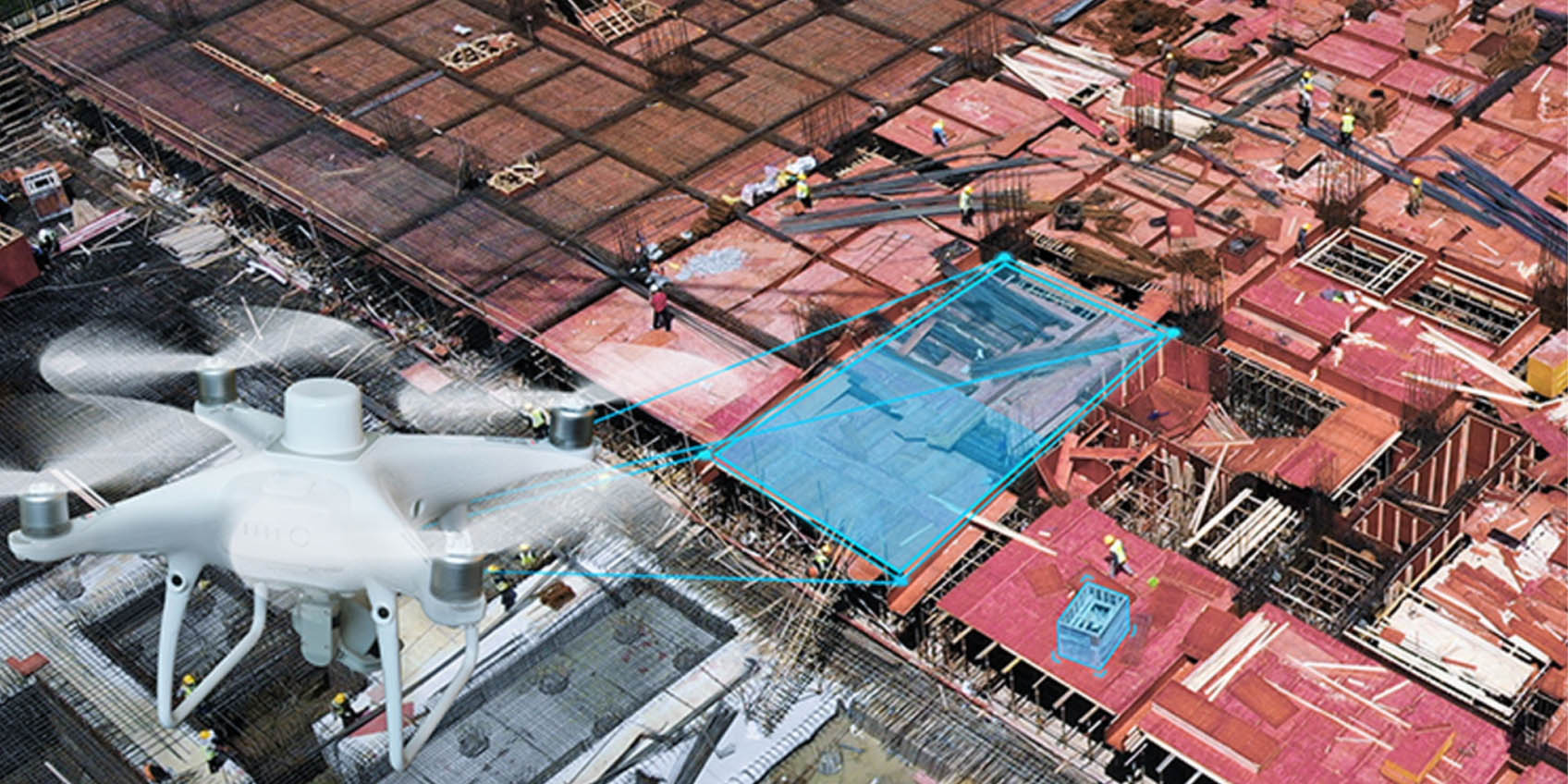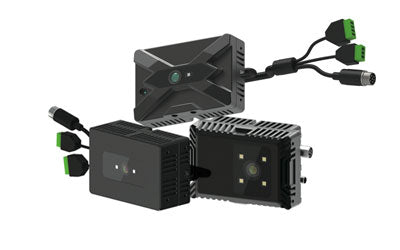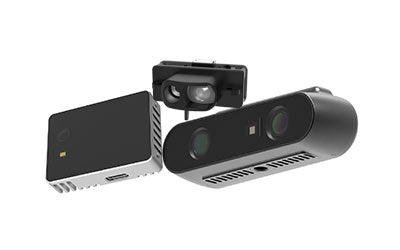Drones with ToF Sensors: A Precision Tool for Volume Measurement

what is depth?
'Depth' refers to the distance from the surface of an object to its base or a reference point. In computer vision and 3D imaging, depth typically refers to the distance information of an object or scene in three-dimensional space, helping devices (such as cameras or sensors) understand the relative position and spatial structure of objects.
As drone technology advances, ToF (Time-of-Flight) sensors have become a cutting-edge tool for volume measurement. With precise distance sensing capabilities, ToF sensors help drones measure the volume of various objects, making them ideal for industries such as warehouse management, mining, and construction. The combination of drones and ToF sensors not only improves the efficiency of volume measurement but also makes it faster and more accurate in large-scale or complex scenarios, offering innovative solutions for different industries.
How ToF Sensors Work
ToF sensors measure the distance by emitting light pulses and calculating the time it takes for the light to reflect back from the object. This process quickly generates 3D point cloud data of the object, providing detailed depth information. When integrated with drones, ToF sensors allow for aerial scanning from various angles, generating a complete 3D model of the object or area, from which the volume can be calculated.
Compared to traditional volume measurement methods, ToF sensors offer high precision, fast response times, and resistance to interference. This makes them suitable for complex environments and irregularly shaped objects. As a result, ToF sensors are increasingly used in volume measurement, becoming a critical part of modern measurement technology.
Advantages of Drones with ToF Sensors in Volume Measurement
-
Efficient and Fast Measurement
Traditional volume measurement, especially for large objects or areas, often requires significant time and manpower. Drones equipped with ToF sensors can quickly scan the target object, collecting distance information from multiple angles and automatically generating a 3D model. This comprehensive, contactless measurement method significantly reduces measurement time, especially in large-scale settings such as mining or construction sites, greatly improving efficiency.For instance, when measuring piles of sand, ore, or goods, traditional methods may require field personnel to measure multiple points and calculate average heights, while drones with ToF sensors can swiftly gather accurate data from all surfaces, allowing for faster and more precise volume calculations.
-
High Accuracy for Complex Shapes
For irregularly shaped objects, traditional methods often struggle to provide accurate volume estimates. In contrast, ToF sensors generate 3D point cloud data that can capture every detail of an object, whether it's curved, uneven, or geometrically complex. The comprehensive 3D models generated by drones significantly improve the accuracy of volume calculations.For example, when measuring piles of stones or construction debris, ToF sensors can accurately measure heights and widths across all areas, avoiding errors caused by insufficient data points in traditional methods, ensuring more reliable volume estimates.
-
Adaptability to Complex Environments
ToF sensors are highly resistant to interference and can operate effectively in bright sunlight or dark environments, ensuring drones maintain accurate volume measurements under various conditions. This makes drones with ToF sensors suitable for both indoor and outdoor large-scale measurements, such as in mines, construction sites, and forests.In environments with complex terrain or obstacles, ToF sensors provide real-time 3D data to help drones avoid obstacles, ensuring safe flight. This flexibility greatly expands the range of applications for drone-based volume measurement, meeting the needs of a wide range of industries.
-
Contactless Measurement for Enhanced Safety
Traditional methods often require personnel to physically access objects or enter potentially hazardous areas for measurement, posing safety risks. Drones equipped with ToF sensors can perform remote, contactless measurements, significantly improving safety.In mines, hazardous construction areas, or chemical plants, ToF sensors allow drones to scan target areas from a safe distance, protecting workers and reducing errors and inconveniences caused by manual operations.
Typical Applications of Drones with ToF Sensors for Volume Measurement
-
Mining and Stockpile Measurement
In mining operations and material stockpile management, fast and accurate measurement of ore, sand, and coal piles is essential. Traditional methods struggle to provide high precision due to complex terrain and irregular shapes. Drones with ToF sensors can scan the surface of these stockpiles from the air, generating detailed 3D models and calculating precise volumes. This provides reliable data for optimizing production and inventory management in mining operations.Drones can cover large stockpile areas, reducing the difficulty of manual measurements while improving speed and accuracy, ensuring companies can track stockpile volumes and plan inventory and transportation more effectively.
-
Construction and Earthwork Projects
In construction and earthwork projects, measuring the volume of excavated or deposited materials is a common workflow. Accurate volume measurements are crucial for project progress management and cost control. Drones with ToF sensors can quickly scan construction sites, generate 3D maps of excavation areas, and help managers track progress in real-time.With 3D models created by drones, construction teams can track the volume of excavated materials, plan material allocation, and ensure project timelines and resource management align with expectations.
-
Warehouse and Logistics Management
For managing large goods and inventory, drones with ToF sensors can quickly measure the volume of items, providing accurate data for optimizing warehouse layouts and improving inventory management efficiency. For instance, in freight stations, ports, or warehouses, drones can scan stockpiles of goods from the air, generating volume data and integrating with warehouse management systems for smarter inventory control.Automated measurements reduce the complexity of manual operations, improving the speed and accuracy of inventory counts, offering a more efficient solution for warehouse management.
-
Agriculture and Forestry Resource Management
In agriculture and forestry resource management, drones with ToF sensors can measure the volume of trees and crops, providing data to support farm management and forest resource assessment. By measuring crop volumes, farmers can estimate yields and plan future planting strategies, while forestry departments can assess the volume of trees to manage resources more sustainably.The high-precision measurement capabilities of ToF sensors help agriculture and forestry sectors manage natural resources more effectively, contributing to sustainable development.
Future Development of Drones with ToF Sensors for Volume Measurement
As drone and ToF technology continue to advance, the accuracy and efficiency of volume measurement will improve even further. Future drone measurement systems may integrate additional sensors, such as LiDAR and infrared sensors, to create a multi-sensor fusion system that further expands application scenarios.
Artificial intelligence and big data analysis will also combine with ToF sensors to provide more powerful data processing capabilities. Drones will use AI to analyze measurement data in real-time, offering precise volume calculations and predicting future trends. This smart measurement approach will greatly enhance management efficiency and decision-making for businesses.
Conclusion
Drones equipped with ToF sensors offer an efficient, precise, and safe solution for volume measurement. By quickly generating 3D models and automatically calculating volumes, drones with ToF sensors play a crucial role in industries such as mining, construction, warehousing, and agriculture. As technology continues to evolve, the application potential of drones with ToF sensors will broaden, providing more industries with intelligent and automated volume measurement tools.
Synexens 3D Of RGBD ToF Depth Sensor_CS30
Our professional technical team specializing in 3D camera ranging is ready to assist you at any time. Whether you encounter any issues with your TOF camera after purchase or need clarification on TOF technology, feel free to contact us anytime. We are committed to providing high-quality technical after-sales service and user experience, ensuring your peace of mind in both shopping and using our products
-
Postado em
CS30






